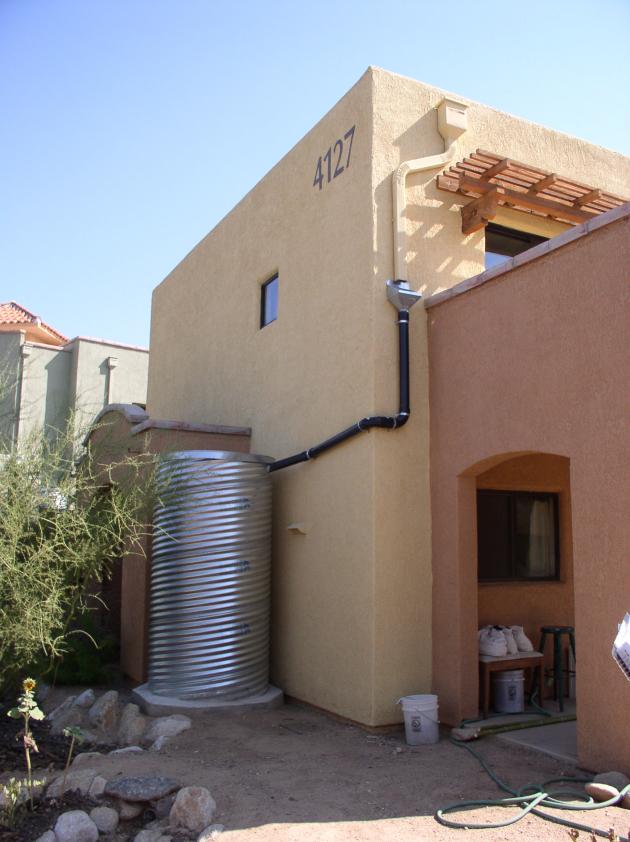Water harvesting for later use involves collecting rainwater in a tank of some kind. Tanks can be as simple as a sturdy garbage can under a downspout or as complex as a large underground tank and pump.
Why Collect Water for Later Use?
- Can reduce water bills
- Saves a valuable resource
- Rainwater is free of salts and other minerals or chemicals that may be harmful to plants
- Reduces pollutants to area streams and rivers by keeping water on site and off impervious paved areas

Tips for Collecting Water for Later Use
- Know how much water is going to come off of the roof or other surface. This will determine tank size
- Provide an overflow outlet or link to another tank
- Use a filter to collect debris from roof runoff
- Use a purification system if using for drinking water
- Metal roofs work best
- Check local ordinances. Rainwater collection for storage and reuse is restricted or illegal in certain states, counties and cities
- Use opaque dark colored tanks to reduce algae growth
- Use HDPE pipe for above ground tanks. Avoid PVC pipe which degrades in sunlight
Additional Resources:
An Introduction to Green Infrastructure Practices
Regulations and Statutes
West
Colorado – Rainwater Collection
Nevada – Make Each Drop Count: Harvest Water for the Landscape
Washington – Homeowner Practices for Managing Rain
Northeast
Rain Barrels Part I: How to Build a Rain Barrel
Rain Barrels Part II: How to Build a Rain Barrel
Southeast
Alabama – Rainwater Harvesting for Irrigation Water
Southwest
Arizona – Rainwater Harvesting for Drylands and Beyond
Texas – Rainwater Harvesting
